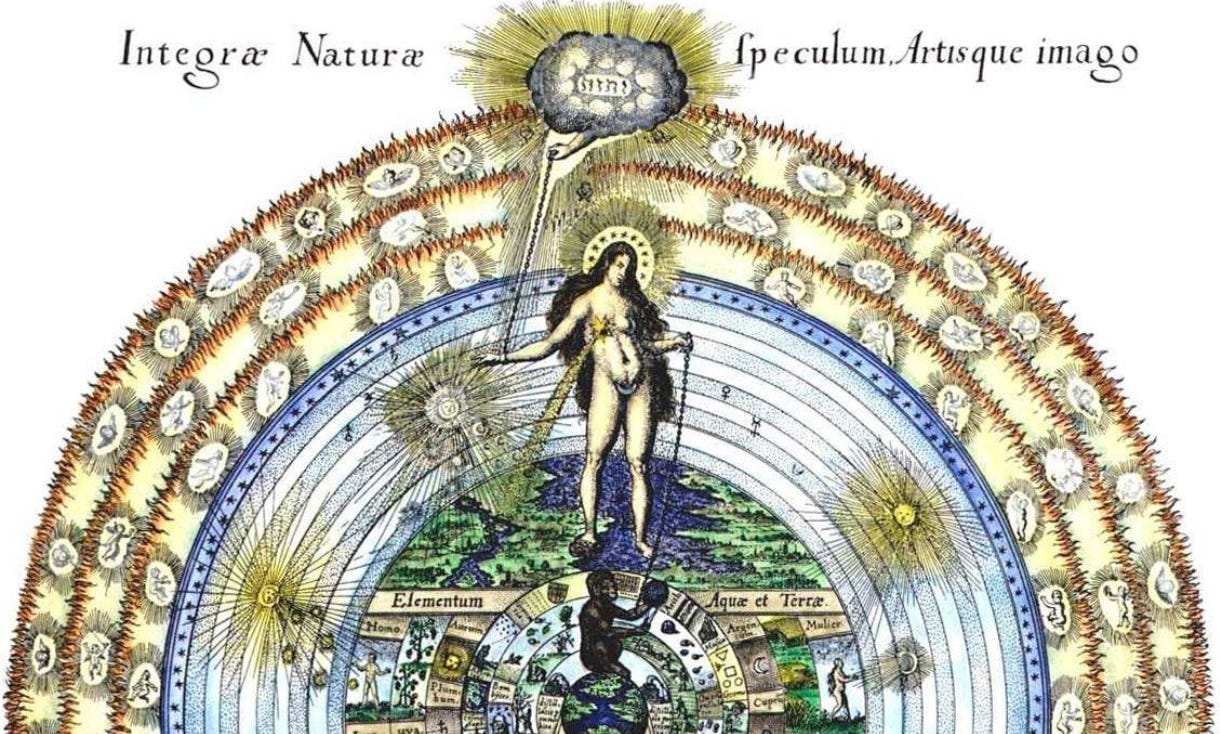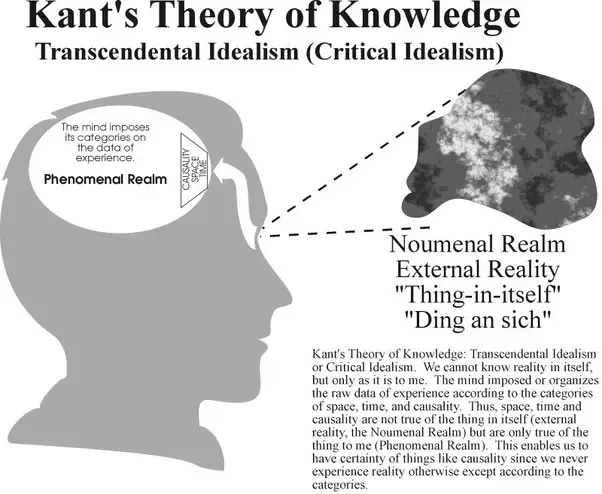Back in January I introduced some optimization techniques centered on breaking habit circuits and building new ones. In it I defined collections of habit chains as ‘subroutines’ - that is your automated behaviors. Then I described some practical ways to change them. Whether it’s praying the rosary, using an alarm clock, or a strange morning ritual, the idea was: break a habit chain by introducing some novel behavior. Ok, so that was applied self help, or is it witchcraft? It’s not very clear is it? If something works on a subjective level does it matter if it is reflected in objective empirical models? Furthermore, what really is a model? Why should you care? This will be the first of a three part series that will lay the foundations of a sound understanding of reality that at least for myself has been the foundation of my daily practice of self improvement, discipline and wisdom acquisition. Call it “the work” or your “grind” or your “praxis” or whatever. It’s all the same. I can explain explain tons of tips and tricks, but without theory, the practice is just that, tricks. The three parts are:
Reality Models I: Phenomena vs Noumena, where we will explore the limits of metaphysics established by Immanuel Kant, in “Critique of Pure Reason”
Reality Models II: Switches, where we will explore Donald Hoffman’s interface theory of perception.
Reality Models III: Anima mundi, where we will explore panpsychism, pantheism, and the notion of the perennial philosophy.
What are Models?
A model is an “informative representation of an object, person, or system”. All of your inner experience is itself a model. This is proven by biology most importantly. It is clear from inference and evidence that the world we experience is the assembled representation of our sensory input organs. That representation is then filtered through abstraction as studied in cognitive science, the derivative disciplines out of cybernetics, psychology and philosophy. The classical question of ‘what is the self?’ is naturally bound up with the question of, ‘what is inner experience’ and ‘what is the outside world?’. Can it be known as it is?
The map is not the territory is the most basic fact we will work with here, and I’ll break it into three layers.
The physiological level
The philosophical level
The metaphysical level
Your entire perception of reality right now in this present moment as you are reading this is a model. It is not the ‘true’ reality - as a thing in itself.
What does this mean?
On a physiological level it means that your brain is generating a series of experiences, or qualia that together represent inner experience. Your inner experience is the combination of all the information being processed by your senses through the context of your ego, your memories and all that you are right now. The visual representation of the world, sound, touch, scent, taste act as a first layer. We then know through abstraction - language, the emotional content of how you feel right now, all of your somatic responses, how you are sitting, whether or not you are comfortable that inner experience also includes the contextual connections between all information you are experiencing: memory, emotion, the past, your expectations of the future. It includes your subconscious, the subtextual connections between all these different threads, even those you are unaware of as shadow processes. On top of all of these assumptions drawn from physical biological evidence is the fact that the brain itself is a symbol and can only be known through the veil of representation, as is every single piece of scientific knowledge we possess about its form and function
On a philosophical level we can go one layer further. If inner experience is a model, then so is everything we know about the world. In fact the world itself that we experience is a model and not the real thing. More on this later.
On a metaphysical level comes an initiatory realization. If all consensus reality, that is the empirical true world of observation and science, is itself a model and what it seeks to represent is an unknowable outside world, a world as itself, then what can we say of true reason? This opens a lot of strange doors.
If inner experience is filtered through the self, then how you think about reality affects how you interpret it and places the minimum and maximum limitations on what options are available to you at any moment in life. This isn’t some hokey New Age nonsense. You and I and both know all reality as an internal model. This is true of all living things. There is a quote commonly attributed to Anaïs Nin that has its roots in the Babylonian Talmud : “We don’t see things as they are, we see them as we are.”
I encourage you to read Thomas Nagel’s essay What is it Like to be a Bat for a fun and clear critique on the mind-body problem. The basic idea here is, even if we are to take reality in the most reductively materialist manner possible (think my physiological layer above ) - we cannot ever do away with the remoteness and the ineffability of the objective world. We only know reality as a human can know reality, never as say, a bat could, not even as another human being would. And even as ourselves, we only know our internal models.
Our internal models are colored by how we subjectively interpret them. You and I can both experience the same outer reality (noumena) and have vastly different impressions of the same experience. Think of the two guys on a bus meme.
Inner experience in the immediate present moment is affected by our biases, our pasts, our cognitive function both as a result of genetics and environment. Whether you’re the guy on the left or right hand side of the bus is the end result of a cascading cause and effect chain. The chain is made up of things you had no influence over: being human, being your parents’ child, your ethnic background, your place of birth, and so forth. It is also made up of things you did have influence over and the paths of those experiences leading up to the present.
Again, inner experience is a model of reality, not reality itself. I use this next example to clarify the idea for people. Imagine you are standing at an antique globe of the world. You spin it and stop your finger pressing against Tibet, touching the grooves of the globe sticking out on the Himalayas. Does this mean you have been to and touched the ground of the Himalayas? Not quite. Now think of the street outside the room where you are reading this. Your knowledge of that street is just as abstracted away as the ‘true’ Himalayas are from the bumps on the globe. Even stranger here is this: everything you are experiencing, including reading this essay right now on your screen is just like you touching the mountain range on the globe. You’ve never actually seen this page, you’ve never really experienced the street outside. You’ve only ever known a map, a globe modeling the real thing as the inner experience in your mind.
Kant’s Critique of Pure Reason: phenomena & noumena
The job interview
You’ve been ushered into a research office. The first odd thing you notice is how the overhead florescent lights are silent. Another room is visible through floor to ceiling glass doors on the opposite side of the door you walked in through. A series of isolation water tanks are lit each only by a single overhead lamp through the outside room. In the classroom you sit at a center table. Bookshelves and desks occupy the walls, white boards with diagrams, and orthogonal to table is a single blackboard draped in a white sheet. In the center of the table is an apple.
You wait for twenty minutes. You notice the peculiar antique quality of everything. The room is a time capsule. You cannot place exactly the time period, but it is not the present. Bits of fever dream, wallpaper, adding machines, a color off oak, wood paneling, dot matrix line printers with continuous stationery.
The entry door opens and a man walks in with a woman. He’s wearing a white pressed mandarin dress shirt with suspenders and pleated dress pants. The woman is holding a clipboard and wearing a mid century secretary’s dress in mauve with a slight stitching of pinstripe. They sit opposite the table from you.
The man flips through a manilla folder on the table,
“You have a promising profile, but we’ll have to start with a question. Everyone does.”
The woman says nothing and holds a pen in her opposite hand to the board.
“What we do here is dependent on this question. It’s simple, but it tells us a lot about whether or not you have the right cognition for what you will be tasked with.”
“OK” you say, your expression calm, a mask covering not confusion but curiosity.
“Good”, the man says.
He gestures to the apple at the center of the table,
“This isn’t a trick question, unless you think it is. That also affects the test. Start by telling me what the apple is.”
You look to the woman, she averts, writes something down on the clipboard.
“It’s not a trick question…”, you say to the interviewers.
“I’m wrong if I describe what it is. I’m wrong if I describe a red fruit, made of sugar, made of fructose ketone. I’m wrong if I describe monosaccharides. I’m wrong if I describe the color, red, the spectrum band it lets off on our eyes. I’m guessing I’m wrong too if I describe it from memory. What it tastes like, what it means, my memories of apples what they represent. The garden? No. Whatever that thing on the table is. I’ve never known it. If there is such thing as an apple I’ve never known one. What that is, is a symbol that you and I, that she and I, that we all know means something. The apple on the table is a symbol that the three of us can all agree means the same thing or kind of the same thing. But none of us has ever known a real apple, never held one, never tasted one. We only know the apparition as it is constructed inside our minds.”
The interviewers take notes.
“Good. Come with us.”
They direct you to stand and walk you out to the isolation tanks, in the interior glass room.
If the apple is a symbolic object to both the interviewers and the candidate, is there an object that exists anywhere in the world outside the three people that is a true apple? An apple in itself?
Transcendantal Realism
Immanuel Kant’s First Critique, the 1781 “Critique of Pure Reason” was peculiar for its time as it threaded a line between empiricism/rationalism and metaphysics. What the Critique accomplished was defining not only the limits of metaphysics but of empiricism itself. Building off of the skepticism of David Hume, Kant establishes the system of Transcendental Idealism which addresses much of the inner experience problem we discussed earlier. Kant establishes that space and time are forms of intuition, that is they are immanent of our internal map/models and do not have “existence” outside of ourselves. It is an extremely granular work that grinds its arguments down to the most specific. I encourage my readers to give it a chance and read the whole thing through.
Kant’s Transcendental Idealism divides reality into two different categories in the "Ground of Distinction of Objects"2
Phenomena - the inside is the whole of our internal experience. Phenomena depends on space and time as understood by our sensory input. This is the apple on the table as the object the interviewers and the interviewee all experience internally. What you and I would agree is an apple.
Noumena - the outside is the world of objects that exists independently of human senses and inner experience. This is the true apple on the desk. The noumenon is unknowable as it is part of the world of objects outside of the inner maps of perception. This is where there be dragons. Where eldritch things, and gods reside.
Thing-in-itself - objects as they are in the noumena, independent of human inner experience, representation, and observation. Kant states : “objects in themselves are quite unknown to us, and that what we call outer objects are nothing but mere representations of our sensibility, the form of which is space. The true correlate of sensibility, the thing in itself, is not known, and cannot be known, through these representations, and in experience no question is ever asked in regard to it” 3
Think of this assertion. Whatever context we ascribe to the outside world exists entirely on an internal level. Visual photon data intuits nothing about law, or ethics. Neither does sound and vibration. Empiricism seeks to “use lawfulness as the defining feature… either by way of a mode of cognition that determines the concept, or by way of rational cognitions that describe the reality of an object.” Either the cognition determines the object itself, or in the natural sciences, cognitively we can discover things that adhere to form. The first form of cognition between between form and concepts are the most developed. In physics we have direct observation, and in mathematics with have a priori (deductive) associations. But even via mathematics, sequentiality requires pure intuition of time because it depends on succession. Next geometry depends on space. Both are concepts that Kant would describe as intuitive. They are internal, of the phenomenological world, not the noumenological world. Space and time are immanent of our internal maps, not “of the” real outside. On the traditionalist empiricist account we do not have access to the external world directly. We do not experience externality directly, only mediately, that is not immediately.
Sense organs lie between us and the outside world. To raise this question, “how faithful is our report of the external world?” assumes that there is any reliable non sensory way of answering the question. It is a state we cannot escape. There will always be our internal map and always be an unknowable outside.
You’ve never known a real apple. You’ve never tasted it, never touched it, never smelled it. The true apple is of the noumena. It is external and unknowable.
Ok, very simple concept, but not quite simple concept at the same time. We get it, reality as we experience it is an internal map, and that map is not the territory. There is a huge risk here of falling into total solipsism, that is the belief that only the self exists. Solipsism is not necessarily invalidated by the “Critique of Pure Reason” at least outside of its arguments on the Transcendental Aesthetic. So what do we do with this?
Solipsism aside, the phenomena / noumena relationship is unavoidable. No matter how faithfully you think your inner representation describes the true outside world, you will never know to what degree it actually does. We will cover the math that attempts to describe that void in the next essay - but for now, the ambiguity of “map is not the territory”, is a great foundation for the limits of metaphysics and empiricism.
How do we apply this information to practice?
If the map is not the territory, and your internal map is a total phenomenological construction of an unknowable outside noumena then there are two implications here we will play with going forward.
Your internal map is whatever you want to make it. You really can be the smiling gentleman sitting on the right hand side of the bus.
The external noumena is an unknowable void. There are magickal mysterious and frightening things there.
Think about it.
Wilson, Robert Anton “Prometheus Rising” p. 36
Kant, Immanuel / Smith, Norman Kemp unabridged “Critique of Pure Reason” pp 257 - 275
Kant, Immanuel / Smith, Norman Kemp unabridged “Critique of Pure Reason” p 74










Great read and a nice summary of some key concepts in philosophy of mind. I think you might like Phillip Goff's latest book, 'Why', which goes into a really interesting argument for pan-agentialism and cosmopsychism - really wild stuff but argued in a compelling way.
I think neuroscientific reductionism is an underexplored topic in modern literary fiction, and I wrote about how I tried to integrate it with a narrative structure here: https://www.decentralizedfiction.com/p/the-incel-as-a-literary-subject
This is great. Thank you for summarizing the concepts of Phenomenon and Noumenon so clearly and giving examples to help us understand them.